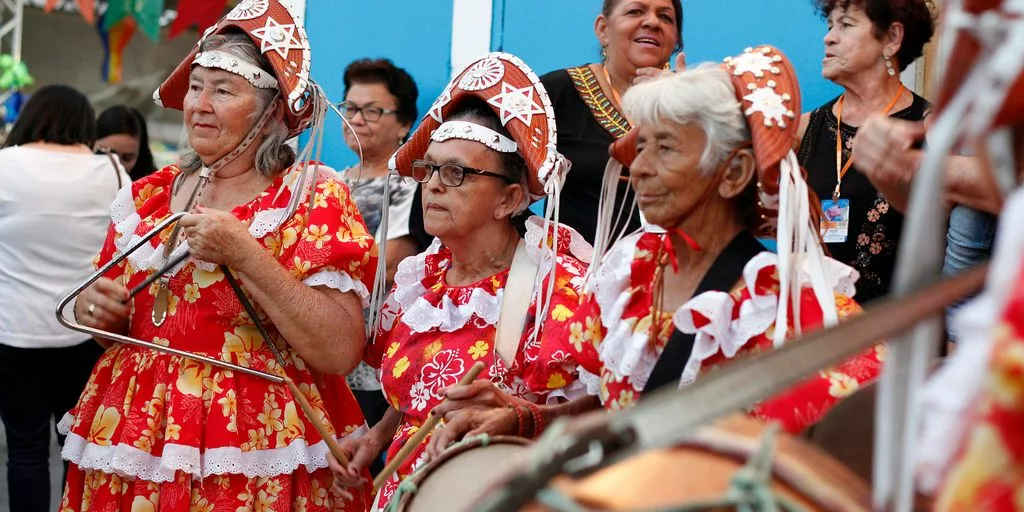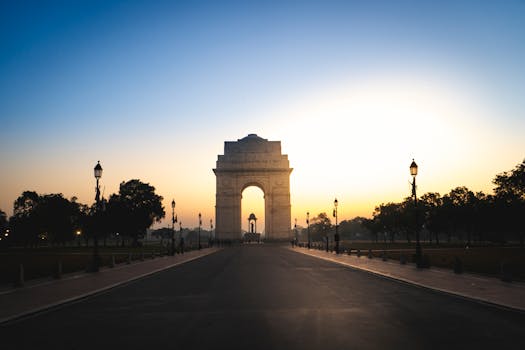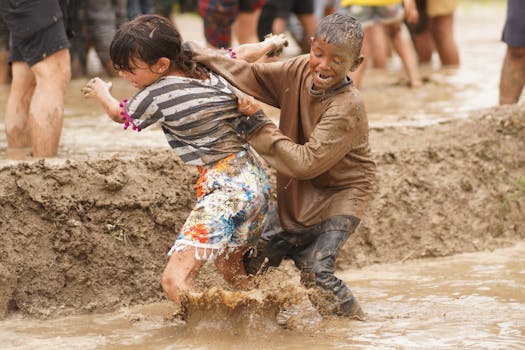
Rio Carnival: A Brazilian Extravaganza

Samba Parades and Street Parties
The Rio Carnival is the world’s biggest and most famous carnival, held in Rio de Janeiro from February 9th to midday February 14th, 2024. The heart of the celebration is the Samba Parade at the Sambadrome, a stadium designed by the renowned architect Oscar Niemeyer, with a capacity for 80,000 spectators. The streets come alive with vibrant music, dancing, and endless street parties, making it a must-see event.
Elaborate Costumes and Floats
Participants don elaborate costumes and ride on stunning floats, showcasing Brazil’s rich cultural heritage. The parade features samba schools competing in a dazzling display of creativity and craftsmanship. The costumes are a riot of colors, feathers, and sequins, each telling a unique story.
Cultural Significance of Carnival
Carnival marks the beginning of Lent, a period of fasting and reflection in the Christian calendar. It’s a time when Brazilians and visitors alike come together to celebrate life, music, and culture. The festival is a testament to Brazil’s exuberant spirit and its deep-rooted traditions.
Obon Festival: Honoring Ancestors in Japan
Traditional Bon Odori Dances
The Obon Festival is a time when families come together to honor their ancestors. One of the most captivating aspects of this festival is the Bon Odori dances. These traditional dances are performed to welcome the spirits of the deceased back to the world of the living. Participants dress in yukatas and dance in a circle, creating a mesmerizing and heartfelt spectacle.
Lantern Lighting Ceremonies
Lantern lighting ceremonies are another highlight of the Obon Festival. Families light lanterns to guide the spirits of their ancestors back to their resting places. This beautiful tradition creates a serene and spiritual atmosphere, as rivers and streets are illuminated with the soft glow of countless lanterns.
Culinary Delights of Obon
No festival is complete without delicious food, and Obon is no exception. Families prepare and enjoy a variety of traditional dishes, such as sushi, tempura, and sweet rice cakes. These culinary delights are not only a treat for the living but are also offered to the spirits of the ancestors as a sign of respect and remembrance.
Obon is a time of homecoming, with families taking part in traditions to respect their ancestors. The festival’s origins trace back to Buddhist traditions and have been celebrated for more than 500 years.
Day of the Dead: Mexico’s Celebration of Life and Death
Colorful Processions and Altars
The Day of the Dead is one of Mexico’s most vibrant and meaningful traditions. Celebrated from October 31st to November 2nd, this event is all about honoring deceased loved ones and making peace with death. The streets come alive with colorful processions, where people dress up in elaborate costumes and paint their faces like sugar skulls. Altars, known as ofrendas, are set up in homes and cemeteries, adorned with marigolds, candles, and photos of the departed.
Significance of Teotihuacan Festivities
One of the most stunning places to experience the Day of the Dead is Teotihuacan. This ancient city, with its iconic pyramids, hosts special festivities that include traditional dances, music, and elaborate altars. The celebration here is a beautiful blend of ancient and modern practices, making it a must-visit destination for anyone looking to fully immerse themselves in this unique holiday.
Traditional Foods and Offerings
No celebration is complete without food, and the Day of the Dead is no exception. Families prepare a variety of traditional dishes like tamales, pan de muerto (a special bread), and sugar skulls. These foods are often placed on the altars as offerings to the spirits. It’s a time for families to come together, share stories, and enjoy a meal in honor of their ancestors.
The Day of the Dead is not just a time to mourn but a celebration of life and death, a moment to remember and cherish the memories of those who have passed on.
Inti Raymi: Peru’s Festival of the Sun
Historical Reenactments and Rituals
Every year on June 24th, Cusco transforms into a vibrant stage for Inti Raymi, the Festival of the Sun. This ancient Incan festival celebrates the winter solstice and the sun’s return. The day is filled with historical reenactments and rituals that transport you back to the time of the Inca Empire. The main event takes place at Sacsayhuamán, an archaeological site just outside Cusco, where actors in elaborate costumes perform traditional ceremonies.
Vibrant Costumes and Performances
The festival is a feast for the eyes, with participants donning colorful and intricate costumes that reflect the rich cultural heritage of the Inca civilization. The streets of Cusco come alive with music, dance, and theatrical performances, making it a must-see event for anyone interested in experiencing authentic Andean culture.
Cultural Heritage of the Inca Civilization
Inti Raymi is not just a festival; it’s a celebration of the Inca civilization’s cultural heritage. The festival offers a unique opportunity to learn about the Inca’s religious beliefs, social structure, and way of life. From the elaborate ceremonies to the vibrant costumes, every aspect of Inti Raymi is a tribute to the Inca’s enduring legacy.
If you’re planning to visit Peru, make sure to experience Inti Raymi. It’s a journey back in time that you won’t forget.
Holi Festival: India’s Celebration of Colors
Throwing of Colored Powders
Holi, often called the "Festival of Colors," is a vibrant celebration that takes place across India. The festival involves the playful throwing of colored powders and water, creating a colorful celebration that is truly a sight to behold. People gather in public spaces, streets, and parks to participate in this joyous event, which signifies the triumph of good over evil and the arrival of spring.
Traditional Music and Dance
During Holi, traditional music and dance fill the air, adding to the festive atmosphere. Participants dance to the beats of drums and sing folk songs, creating an environment of unity and joy. The music and dance are integral parts of the celebration, bringing people together in a shared experience of happiness and cultural expression.
Sweets and Festive Foods
No festival in India is complete without delicious food, and Holi is no exception. Sweets like gujiya and malpua are prepared and shared among friends and family. These culinary delights add a special touch to the festivities, making Holi not just a feast for the eyes but also for the taste buds.
Holi is more than just a festival; it’s a celebration of life, love, and the vibrant culture of India. Whether you’re in Pushkar or any other part of the country, the spirit of Holi is infectious and unforgettable.
Glastonbury Festival: A British Cultural Phenomenon
Iconic Music Performances
Glastonbury Festival is a global mecca for music enthusiasts. Held at Worthy Farm in Pilton, Somerset, this festival features legendary headliners and a diverse lineup of artists. From rock to pop, and everything in between, the music performances are nothing short of iconic. The 2024 lineup is rumored to include big names like Madonna and Coldplay.
Theater and Circus Acts
But Glastonbury is not just about music. The festival also offers a rich tapestry of theater and circus acts. Wander through the festival grounds and you’ll stumble upon mesmerizing performances that captivate audiences of all ages. It’s a living, breathing community that transforms Worthy Farm into a temporary utopia.
Art Installations and Workshops
Art lovers will find plenty to admire at Glastonbury. The festival showcases stunning art installations that add a visual feast to the auditory experience. Additionally, there are numerous workshops where attendees can engage with local vendors and learn new skills. This makes Glastonbury a vibrant tapestry of contemporary British culture.
Glastonbury Festival is more than just a music event; it’s a cultural phenomenon that offers a holistic experience, blending music, art, and community in a unique way.
Gold Eagle Festival: Mongolia’s Ancient Tradition
Kazakh Eagle Hunters and Their Birds
Witness the incredible bond between Kazakh eagle hunters and their majestic birds at the Gold Eagle Festival. Held in the remote Bayan-Ölgii province, this festival showcases the ancient art of falconry. Hunters from across the region gather to demonstrate their skills, with eagles soaring high and diving with precision.
Traditional Games and Competitions
The festival isn’t just about the eagles. It also features a variety of traditional games and competitions. From camel races to archery, there’s no shortage of excitement. These events offer a glimpse into the rich nomadic culture of Mongolia.
Nomadic Culture and Lifestyle
Immerse yourself in the nomadic lifestyle of Mongolia during the festival. Experience the warm hospitality of the locals, sample traditional foods, and learn about their customs. The festival is a unique opportunity to explore the vast, open vistas of Mongolia and its fascinating traditions.
Conclusion
Traveling to festivals around the world in 2024 is more than just a vacation; it’s a chance to dive into the heart of different cultures. From the lively streets of Rio during Carnivale to the spiritual lanterns of Japan’s Obon Festival, each event offers a unique glimpse into the traditions and values of its people. These festivals are not just about fun and celebration; they are about connecting with others, learning new things, and experiencing the world in a whole new way. So, pack your bags and get ready for an adventure that will fill your heart with joy and your mind with unforgettable memories. The world is waiting for you to explore its rich tapestry of cultures and festivals.
Frequently Asked Questions
What is the Rio Carnival?
The Rio Carnival is a huge festival in Rio de Janeiro, Brazil. It features samba parades, street parties, and colorful costumes. It’s a celebration of Brazilian culture and spirit.
When is the Obon Festival in Japan?
The Obon Festival in Japan takes place from August 13th to August 15th. It’s a time to honor and remember ancestors with dances and lantern ceremonies.
What happens during the Day of the Dead in Mexico?
During the Day of the Dead, families in Mexico honor their deceased loved ones. They create altars, join colorful processions, and prepare special foods.
What is the significance of Inti Raymi in Peru?
Inti Raymi, or the Festival of the Sun, is a celebration of Inca heritage in Peru. It includes historical reenactments, vibrant costumes, and rituals honoring the sun god.
How is Holi celebrated in India?
Holi, the Festival of Colors, is celebrated in India by throwing colored powders, dancing to traditional music, and enjoying sweets. It’s a joyful event that marks the arrival of spring.
What can I expect at the Glastonbury Festival in the UK?
At Glastonbury Festival, you can enjoy iconic music performances, theater and circus acts, art installations, and workshops. It’s a vibrant celebration of contemporary British culture.


